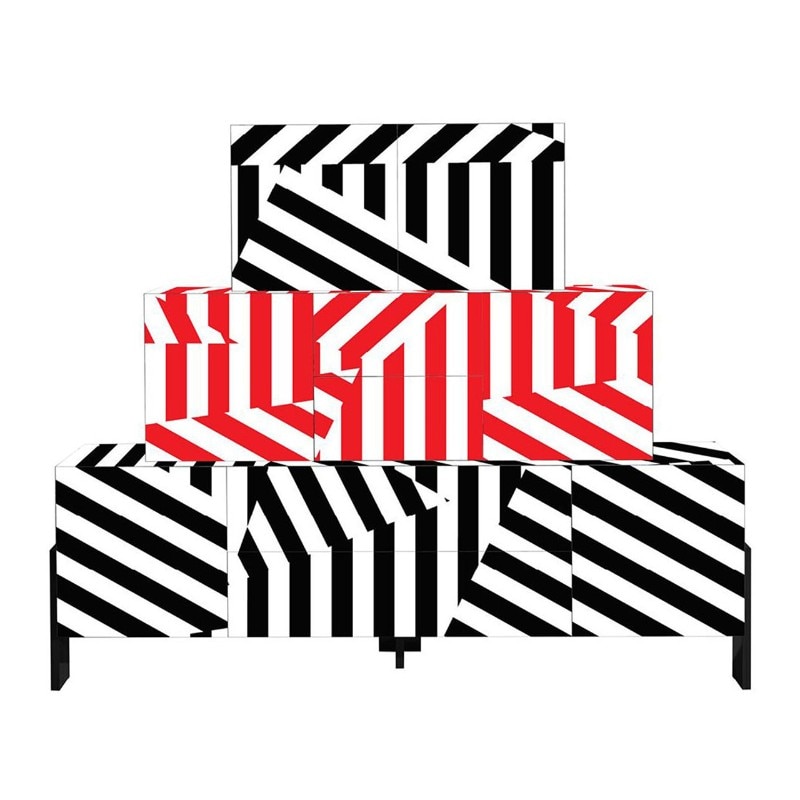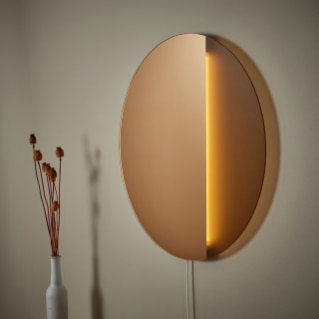Treat yourself: 10 design masterpieces over € 5,000

Tobia Scarpa, Biagio, 1968, Flos
A sculptural, abstract and futuristic object, a child of the 60s and a prophet to the 70s, Biagio is a marble sculpture by day, a light sculpture by night, modulated and shaped by translucent curves. It is a table lamp carved from a single block of statuary white Carrara marble weighing about 7 kg. As for its iconic strength, the words of its designer about his own creative process are enough to explain: “…everything has happened by chance. This is what is wonderful about objects when they are simple and show their inner strength”.
(image via flos.com)
€6.200

Gaetano Pesce, Feltri, Cassina, 1987
Figurative and technological research immediately made this armchair a story in itself: Cassina wanted to patent such story, after developing it within its research centre. It is made entirely of natural fabric, including the structural part. The body is in fact made of wool felt, stiffened with thermosetting resin in the lower section, and modelable in the upper one, to modulate the effect of an enveloping blanket achieved by combining the structure and the internal quilting. The two components are available in a wide range of colors and finishes, creating a multiplicity of possible variations (Raf Simons' vintage quilt collection was chosen to finish the quilts for a limited series of 100 pieces)
from €7.000

Ingo Maurer, Birds Birds Birds, 1992
This suspension lamp best represents Ingo Maurer's approach, which combined handcrafted work with control of the entire production, simple materials (here, light bulbs and goose feathers) and the search for an unquestionably maximalist result, aimed at pushing the limits of conventional beauty and acceptability. Not by chance, Maurer once said: "…sometimes less taste is more taste". Although mass-produced, each of these lamps obtains the status of a unique piece from its assembly process and the possibility of an ever-changing adjustment in space.
(image via ingo-maurer.com)
€6.900

Studio 65, Bocca, Gufram, 1970
Bocca (Mouth) is a work of Pop Art: it comes from that season, it talks that talk and — as all pop art was — it is art because it is produced industrially, in large but still limited series. More than famous nowadays, with its shape inspired by Salvador Dalì’s portrait of Hollywood diva Mae West, and later joined by those shapes re-created by Roy Lichtenstein and Claes Oldenburg, this sofa is slightly asymmetrical at the ends, asall human mouths are. It is made of fabric-upholstered polyurethane, and since 2008 it is also available as Pink Lady (fuchsia), Dark Lady with latex-inspired upholstery and a metal megapiercing, and Boccadoro (since 2016), a limited series of 50 pieces.
€7.000

Driade Lab, Ziqqurat, 2020
The Italian brand, well-known for its provocative collaborations with some of the most influential names in industrial design, also has its own design unit, Driade Lab, which in this object has worked on questioning the traditional function and character of the buffet, applying floral or geometric patterns to this stack of laminated MDF boxes, close to Daniel Buren's compositions of stripes, with an apparently randomized arrangement that nonetheless integrates fundamental elements such as edges or handles according to a precise compositional logic.
(image via madeindesign.it)
€7.500

Charles e Ray Eames, Lounge chair and ottoman, Vitra (Herman Miller), 1956
Legend has it that one day Charles Eames asked: “Why don't we make an updated version of the old English club chair?”, and that after a few years of experimentation, the result was this disruptive manifesto of a new domesticity, combining the modern functionality of metal office chairs, a one-piece structure in curved wood and removable leather cushions. As early as the 1940s the Eames were already experimenting with the potential of curved plywood, transferring it to furniture with their 1946 chairs: this evolutionary spirit is maintained today by Vitra, which has created a new, larger version of the Lounge Chair to respond to the increase in average human height in recent decades.
€12.600

Carlo Mollino, Cavour CM, Zanotta (since 2020), 1949
Ever since the 1930s, Mollino has been working on a research into the structural performance of lightness, with thin wooden elements with organic, biomorphic shapes, contrasting the orthogonality of rationalism, emphasised by the transparency of crystal tops. In the collection that Zanotta reissued in 2020 as a tribute to the master of the Teatro Regio, the wooden trusses of the Reale table can be found, as well as the dialectics between dynamic curves and abstract volumes of the Cavour desk, all played out between bold overhangs and punctiform supports. (image courtesy Zanotta)
from € 13,980

Ettore Sottsass, Carlton, Memphis, 1981
It is clear that when Carlton arrives in a home, a manifesto is arriving: the manifesto of Memphis, of post-modernism, of an international wave generated by an Italian intuition. This bookcase is easy to be seen without books, because of its powerful nature of monument, an architectural object or a home totem, making fun of monumentality itself as well as of the precious materials it should propose: it is in fact made of MDF, covered with laminates by Abet-print, a brand that was already fundamental in the re-discussion of the value of materials which set the foundation for the Italian radical season of Superstudio and Archizoom.
€15.770

Fernando e Humberto Campana, Boa, Edra, 2002
For commercial reasons it is defined as a sofa, but Boa is more properly an object generated by the utmost hedonism, where you can experiment and find the positions you like, among the weaves of four 30-meter tubes, filled with polyurethane and goose feathers, covered with iridescent blue velvet, which requiring four people to get assembled and woven. This concept lies at the crossroads between industry, craftsmanship and the uniqueness of the sculptural piece, as already shown by Campana's research — which translated into their Favela and Vermelha chairs, for instance — aiming to deconstruct typologies such as chair, sofa, structure, upholstery, internal or external material.
(image via edra.com)
€25.000

Franco Albini, Veliero, Cassina (formerly Poggi), 1938
Another bookcase, another manifesto: more than 80 years ago, Franco Albini had Poggi crafting a single prototype of a bookcase for his Milan flat in Via De Togni, which was destroyed 20 years later; by that time it had already become an icon in its highest sense: known and copied by everyone, without a single physical specimen of it actually existing. This was until the last decade, when Cassina put some of Albini's fundamental pieces back into production, including this bookcase, rational in both concept and design, consisting of two ash struts from which a cascade of glass shelves hangs, suspended through a system of metal wire and wooden brackets.
(image via cassina.com)
36.000 €

